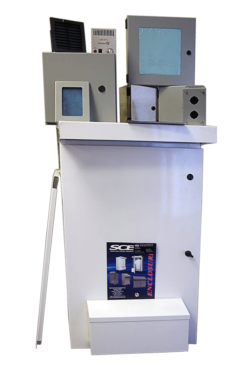When it comes to the matter of designing electrical enclosures intended to protect against debris and water, considering NEMA or IP standards is essential. Before initiating the design, careful consideration should be made as to what is the purpose of designing. As per the guidelines set by the control panel manufacturer, this will help in creating a better functional enclosure.
Meeting NEMA Requirements:
NEMA Type 1: This includes a simple two-piece enclosure style, which should be covered entirely on the top of the case.
NEMA Type 2: This calls for intersecting flanges on all open seams of the case, which makes use of tack, spot, or plug welds to tighten the seams. According to the harshness of the environment, one might need fully welded seams. In this case, a U-Shape enclosure would be extremely efficient; it requires lesser seams to weld.
NEMA Type 4,4X: This necessitates completely welded seams and the utilization of gaskets. The gaskets are suggested for anything having a water body directed towards it. In the application of such type of enclosure gasket, a full gasket piece or style foam strips will be sufficient. For achieving Type 4X, one should select a corrosion-resistant material like aluminum, stainless steel, or galvanneal.
Also Read: Know The Differences Between the Explosion And Flameproof Enclosures
NEMA Type 5: In this matter, overlapping flanges are recommended on all open seams of the case or completely welded seams, as per the environment. The U-shape enclosure will be extremely beneficial for this form of design.
Along with considering NEMA guidelines, under-mentioned factors should be noted at the time of designing an electrical enclosure for water immersion:
It is crucial to design an enclosure with fewer seams to seal because this will reduce the chance of water entering the mechanism. As the machining cost of using stainless steel in designing enclosure is higher, Aluminium stands a better chance to be used as the primary material of enclosure because of its corrosion resistance power.
When integrating an O-ring in the design, keep it facing towards inside of the holes utilized for assembling the enclosure. This tends to avert leakage through fasteners.
Finally, putting-on torque to screws for ensuring an even O-ring compression is highly recommended. The screw size for amassing should surge as the enclosure gets bigger.
Also Read: Repair Or Replace The Electrical Enclosure: What You Need To Know
Ensure to follow the above-mentioned points to design enclosures that protect against debris and water.

